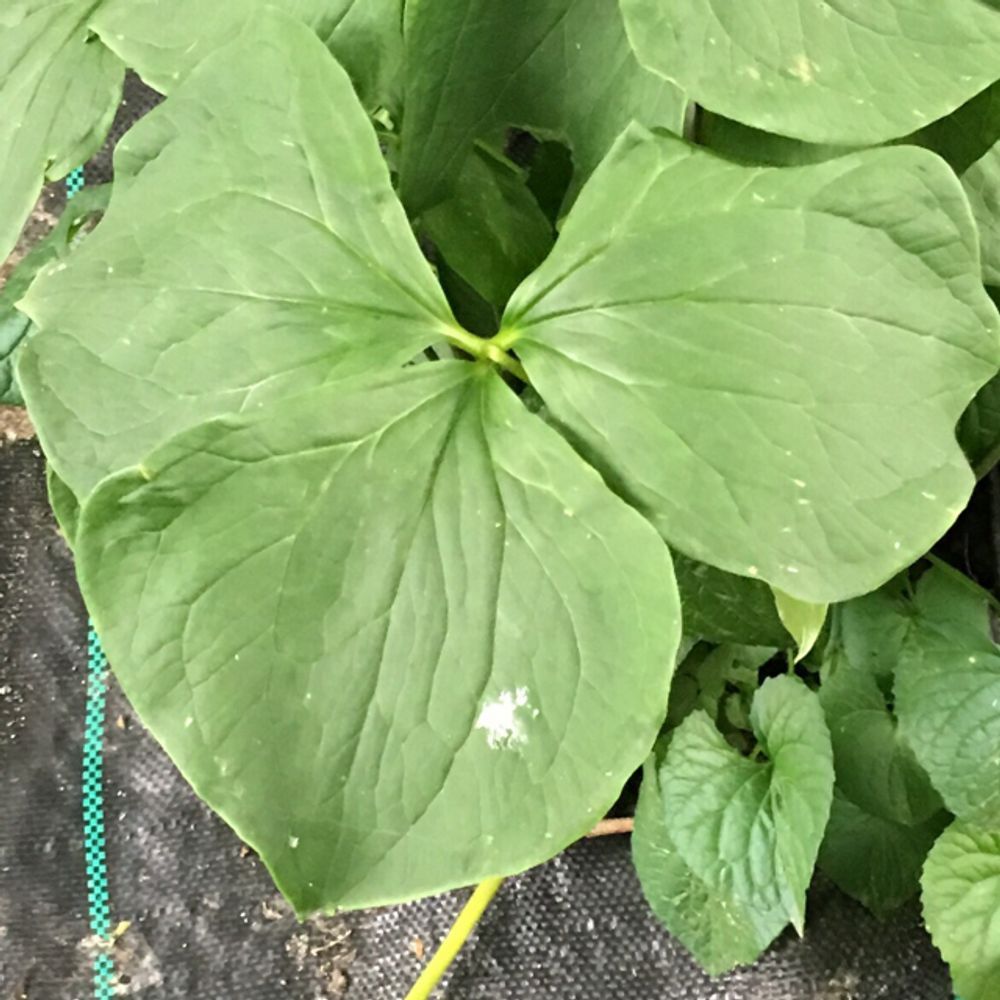Birthroots
(Trillium)

Description
Trilliums are a genus of perennial plants that belong to the family Melanthiaceae. These beautiful woodland plants are native to temperate regions of North America and Asia. Trilliums are known for their unique flowers, which feature three petals, three sepals, and three leaves. In this article, we'll explore the various species of Trillium, their characteristics, and how to care for them. Overview Trilliums are a unique genus of plants that are easy to recognize due to their three-part flowers. The genus consists of around 50 different species, and they can be found in a range of habitats, from woodlands to mountain meadows. Trilliums are mostly known for their large, showy flowers, which bloom in the spring and summer. They are typically white, pink, red, or yellow, and their petals are often mottled or spotted with darker shades. Trillium Characteristics Trilliums are herbaceous plants that grow from underground rhizomes or bulbs. They typically have a single stem that rises up from the ground, with three large leaves that form a whorl at the top of the stem. The leaves are usually green, but some species have leaves that are mottled or marbled with white or silver. The flowers of Trilliums are the most striking feature of these plants. They are typically large and showy, with three petals, three sepals, and a central pistil. The petals are often white, pink, or red, and they may be mottled or spotted with darker shades. The sepals are usually green, but they may also be white or red. The central pistil is often yellow, and it is surrounded by a ring of stamens. Trilliums are known for their ability to change sex as they age. When a Trillium first blooms, it is usually a female, with a pistil that is ready to receive pollen. As the flower ages, the pistil becomes less receptive to pollen, and the stamens begin to produce pollen. This means that older Trilliums are usually male, with stamens that release pollen to fertilize other flowers. Types of Trilliums Trilliums come in many different shapes and sizes, and there are dozens of different species to choose from. Here are some of the most popular types of Trilliums: Trillium grandiflorum – Also known as the large-flowered Trillium, this species is one of the most popular Trilliums. It has large, showy white flowers that bloom in the spring. Trillium erectum – Also known as the red Trillium, this species has dark maroon or red flowers that bloom in the spring. It is native to eastern North America. Trillium chloropetalum – This species is also known as the giant wakerobin, and it is native to California. It has large pink or purple flowers that bloom in the spring. Trillium ovatum – Also known as the western wake-robin, this species is native to the Pacific Northwest. It has white or pink flowers that bloom in the spring. Trillium cuneatum – This species is native to the southeastern United States, and it has deep red or maroon flowers that bloom in the spring. Growing Trilliums The process of growing trilliums involves selecting the right location, preparing the soil, planting the bulbs, and providing proper care and maintenance. Here is a step-by-step guide to growing trilliums: Choose the right location: Trilliums prefer to grow in moist, shady areas with well-draining soil. Choose a location that receives filtered sunlight or dappled shade, such as under a tree canopy. Avoid planting trilliums in areas that receive direct sunlight, as this can dry out the soil and cause the plants to wilt. Prepare the soil: Trilliums require soil that is rich in organic matter, with a pH between 5.5 and 7.0. Amend the soil with compost or well-rotted manure to improve its fertility and drainage. Avoid using chemical fertilizers, as these can damage the delicate root system of trilliums. Plant the bulbs: Trilliums are typically planted in the fall, after the first frost. Dig a hole that is twice as deep as the bulb and twice as wide as the bulb's diameter. Place the bulb in the hole with the pointed end facing up, and cover it with soil. Water the soil thoroughly to settle it around the bulb. Provide proper care: After planting, trilliums require minimal care. Water the soil regularly to keep it moist, but not waterlogged. Avoid letting the soil dry out completely, as this can stress the plant and cause it to wilt. Mulch around the base of the plant with a layer of organic material, such as shredded leaves or bark, to retain moisture and suppress weeds. Maintenance: Trilliums are low-maintenance plants, but they may require occasional maintenance to keep them healthy. Remove any dead or yellowing leaves to prevent disease and pest infestations. Fertilize the soil with a slow-release organic fertilizer in the spring, before new growth appears. In conclusion, growing trilliums requires selecting the right location, preparing the soil, planting the bulbs, and providing proper care and maintenance. With the right conditions, trilliums can thrive and provide a beautiful display of spring flowers year after year.
Taxonomic tree:







